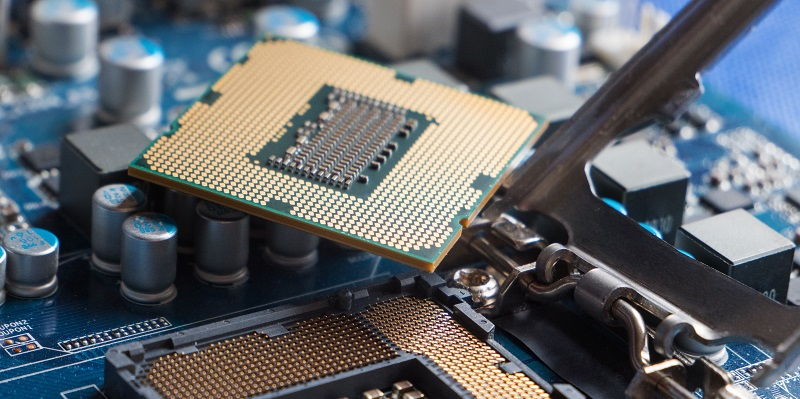During Hot Chips 2023, Intel showcased a groundbreaking CPU design that featured not only 8 cores but also a massive 528 threads, powered by a RISC architecture. This new chip design aimed to address specific workloads that demand extensive parallel computing capabilities and to overcome the underutilization of available hardware, with a particular focus on optimizing cache usage.
Motivations behind the design
The creation of this unique chip design was driven by the need for exceptional parallel compute capabilities in workloads that often left the available hardware, particularly the cache, underutilized. Intel recognized that certain applications required incredibly high levels of parallel processing and saw an opportunity to develop a chip that could effectively utilize the available resources to meet these demanding workloads.
Expansive CPU Design
The new CPU developed by Intel features 8 cores and an astonishing 528 threads. This impressive architecture, which is based on the RISC architecture instead of the traditional x86, sees Intel pioneering the use of silicon photonics for networking purposes. The incorporation of silicon photonics in the chip’s design enables faster and more efficient data transfer between components.
Multi-Threaded Pipelines for Enhanced Performance
An integral component of this CPU design was the inclusion of 16 Multi-Threaded Pipelines (MTP). These pipelines were specially optimized for parallel processing, allowing the chip to execute multiple threads simultaneously and significantly enhancing its computing capabilities.
Boosting Single-Threaded Performance
In addition to the powerful Multi-Threaded Pipelines, the CPU also included Single-Threaded Pipelines (STP) that offered an impressive 8x improvement in single-threaded performance. This ensured that the chip could handle both multi-threaded and single-threaded workloads with exceptional efficiency.
Custom DDR5 Memory Controller
To further enhance its capabilities, the CPU features a custom DDR5 memory controller. This controller allows for the utilization of DDR5-4400 DIMMs with 8B access granularity, enabling faster and more efficient access to memory resources.
High-Speed AIB Ports and PCIe Gen4 Protocol
The chip is equipped with 32 High-Speed AIB ports, enabling efficient communication and data transfer among various components. Moreover, the chip supports the PCIe Gen4 x8 protocol, facilitating high-speed data transfers to and from compatible devices.
Cutting-Edge Networking Capabilities
Intel leveraged its Silicon Photonics technology to create a 2D on-die mesh interconnect for the chip. This networking solution utilized 16 routers that seamlessly interconnected various components within the chip, enabling efficient and high-bandwidth data transfers.
Socket and RAM Support
The chip’s socket, specifically the BGA-3275, caters to the unique requirements of the CPU design. It supports 32 optical I/O ports with impressive speeds of 32 GB/s per direction, as well as 32 GB of custom DDR5-4400 DRAM, ensuring a well-rounded and capable platform.
Scalability and Future Expansions
Intel designed the platform to support up to 16 sockets in an OCP sled form factor. This remarkable scalability allows for configurations featuring up to 120 cores and a staggering 8,448 threads, catering to the most demanding computational workloads.
Linear Performance Enhancement
Intel claimed that linear performance improvement could be achieved as the core count increased by 10-fold. This impressive scalability, coupled with the utilization of advanced technologies and optimized architecture, ensures that the CPU can meet the demands of today’s most demanding applications.
Intel’s unveiling of their revolutionary CPU design, featuring 8 cores and an astounding 528 threads based on RISC architecture, marked a significant milestone in the industry. This groundbreaking chip design aims to tackle specific workloads that necessitate extreme parallel computing capabilities while optimizing the utilization of available hardware resources. With innovative features such as Multi-Threaded Pipelines, improved single-threaded performance, advanced networking capabilities, and support for cutting-edge technologies like DDR5 and PCIe Gen4, Intel showcases their commitment to pushing the boundaries of CPU design and empowering users with unparalleled computational capabilities.

